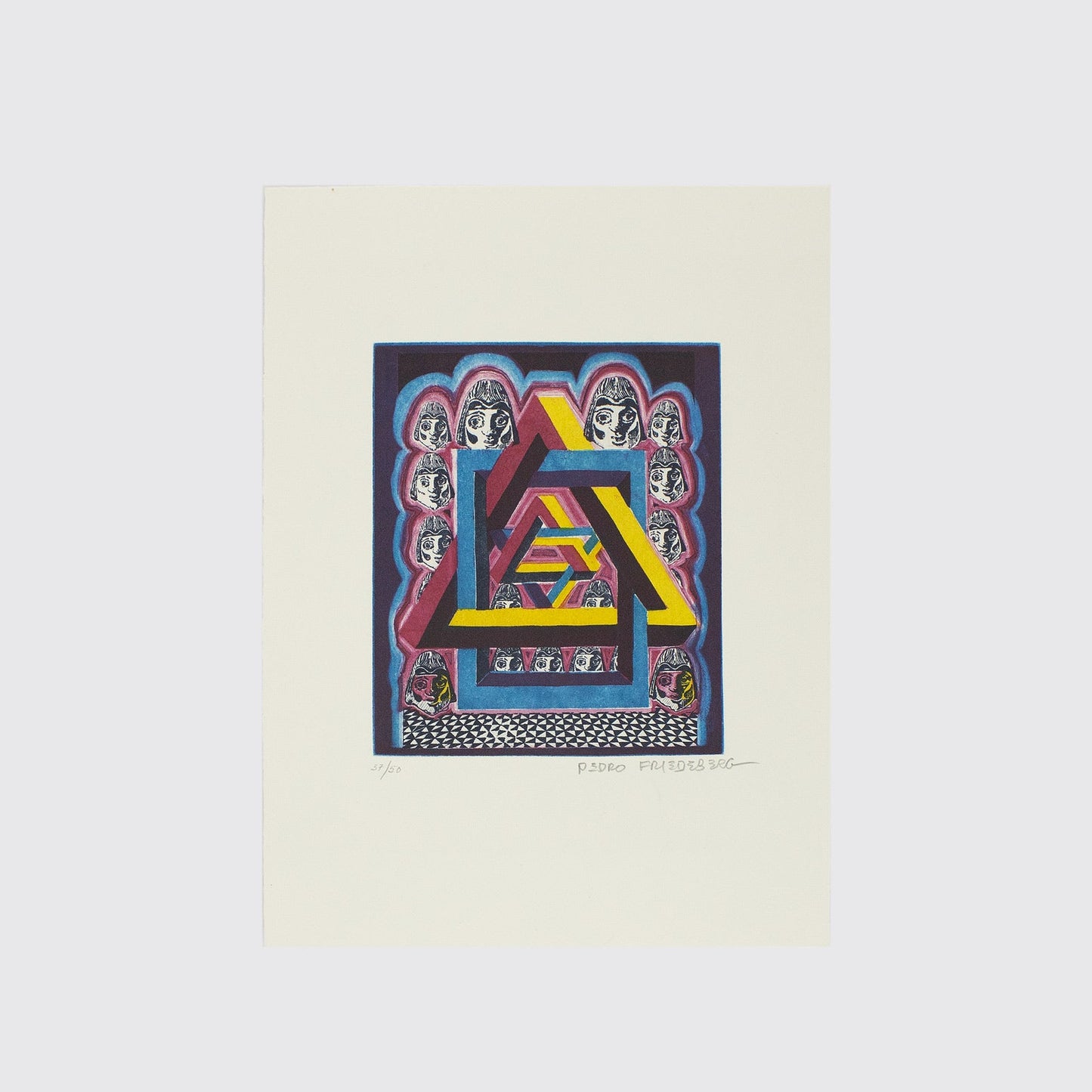4 GIRLS' HEADS. Pedro Friedeberg
4 GIRLS' HEADS. Pedro Friedeberg
Couldn't load pickup availability
Author: Pedro Friedeberg
Title: Cabezas de niñas.
Technique: Aquatint photogravure.
Dimensions: 38.5 x 28.5 cm.
Year: 2020. Series: 37/50.
Printed by: Taller Gráfica Bordes
Pedro Friedeberg is a prominent Mexican artist and designer, recognized for his surrealist style and his iconic work "Hand-Chair."
Early Years and Education: He was born on January 11, 1936, in Florence, Italy, to a family of German-Jewish origin. In 1939, his family emigrated to Mexico fleeing World War II, settling in Mexico City. From an early age, he showed an interest in art and architecture, influenced by Renaissance structures and artists such as Canaletto and Piranesi. He studied architecture at the Universidad Iberoamericana, but abandoned his studies to pursue art, encouraged by sculptor Mathias Goeritz.
Artistic Career. Friedeberg began his artistic career in 1959 with his first solo exhibition at the Diana Gallery in Mexico City. His work is characterized by the incorporation of architectural elements, religious symbols, and ornamental patterns, creating dreamlike and fantastical compositions. Among his most recognized works is the "Hand-Chair," a hand-shaped chair that has sold more than 5,000 copies since its creation in 1962.
Throughout his career, he has exhibited in various international galleries and museums, including the Museum of Modern Art in New York, the Museum of Contemporary Art in Chicago, and the Israel Museum in Jerusalem. He has also participated in biennials and group exhibitions in countries such as France, Portugal, Argentina, and Brazil.
Style and Legacy. Friedeberg's style is eclectic and surreal, with influences from Art Nouveau and Op Art. His works are often filled with ornaments, lines, colors, and symbols that reference diverse cultures and religions. He describes his art as "Nintendo-Churrigueresque," alluding to its complexity and visual richness. Friedeberg was part of the Rupture movement in Mexico, along with artists such as Leonora Carrington and Remedios Varo, rejecting conventional forms and the dominant political art of his time.
Print made at the Taller de Gráfica Bordes under the supervision of Pilar Bordes. The Taller de Gráfica Bordes was an art space founded in 1983 by Mexican artist Pilar Bordes, along with her sister Carmen, and her husband, sculptor Paul Nevin. Initially based in Guadalajara, Jalisco, the workshop moved to Mexico City in 1996 and later, during the pandemic, to San Miguel de Allende, Guanajuato, as its final location.


